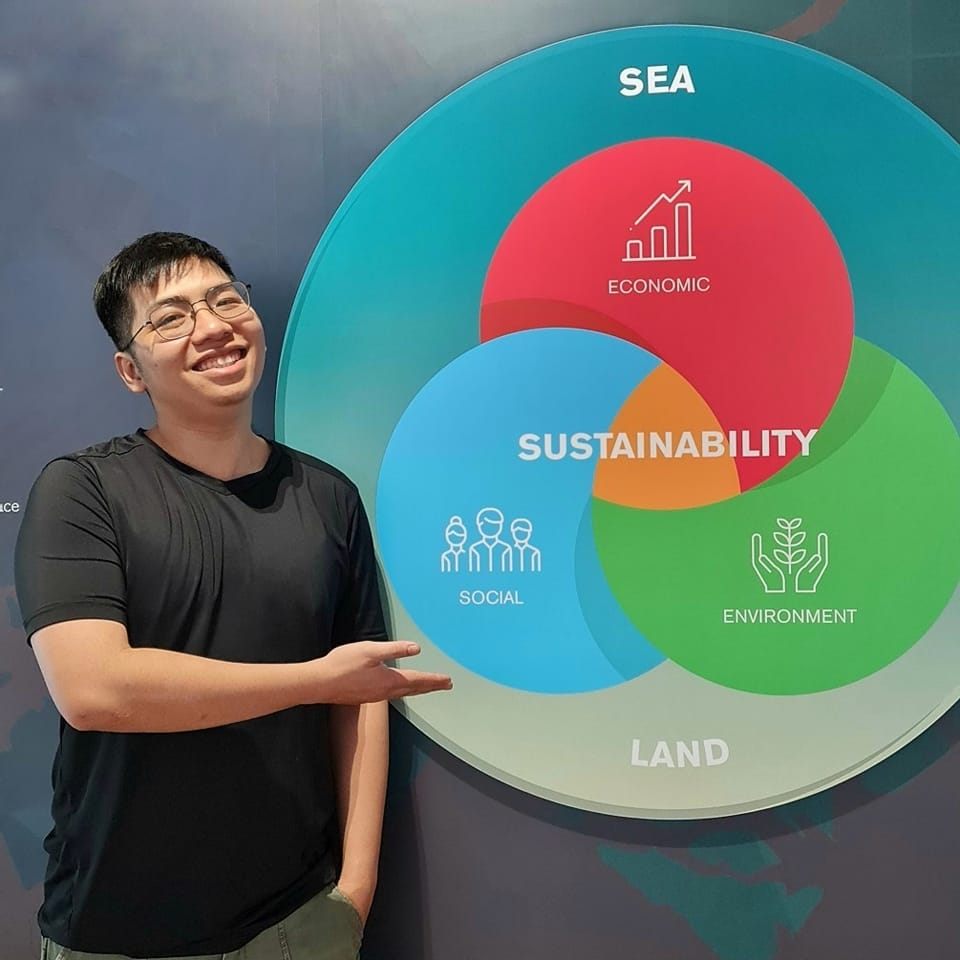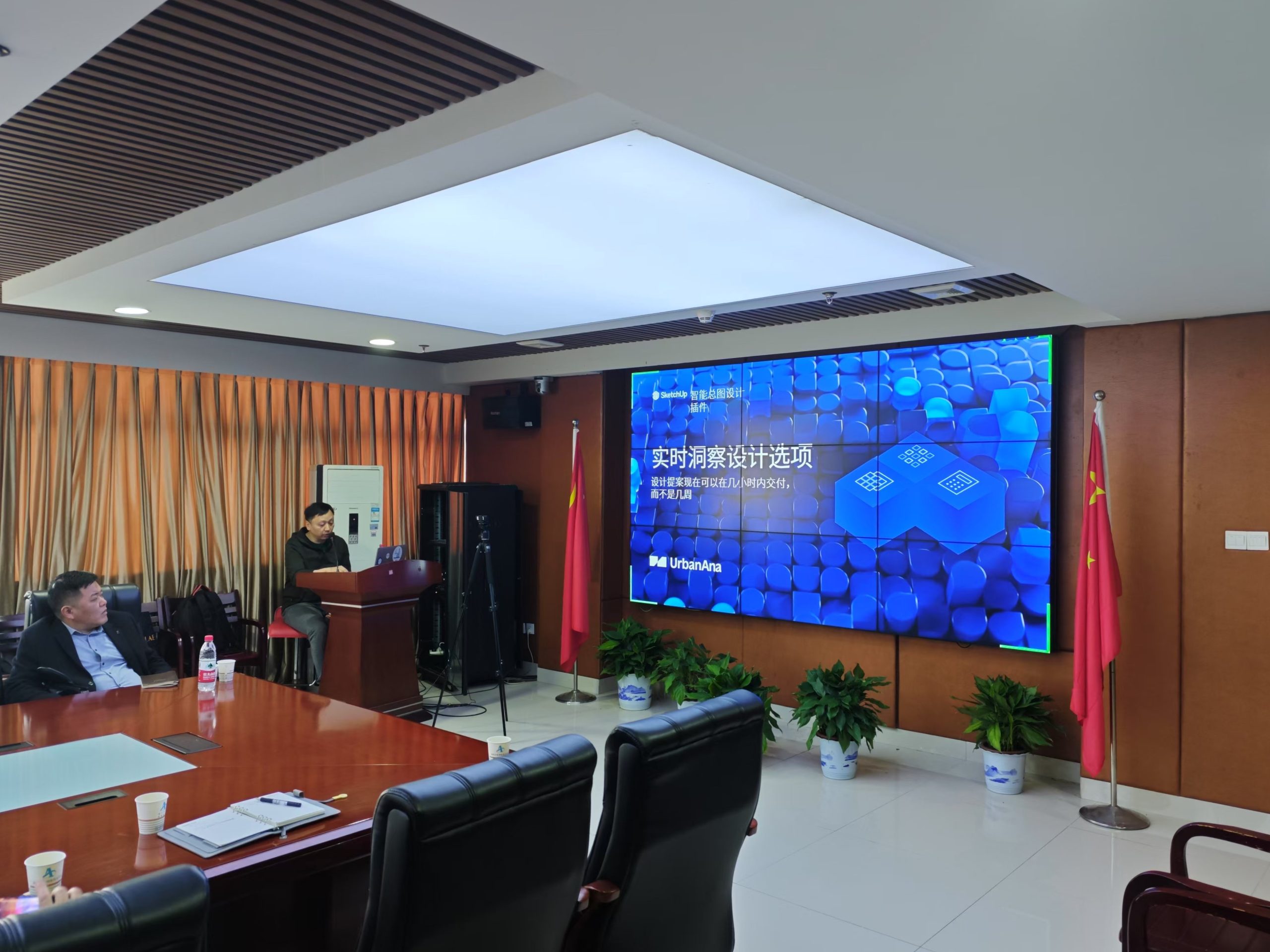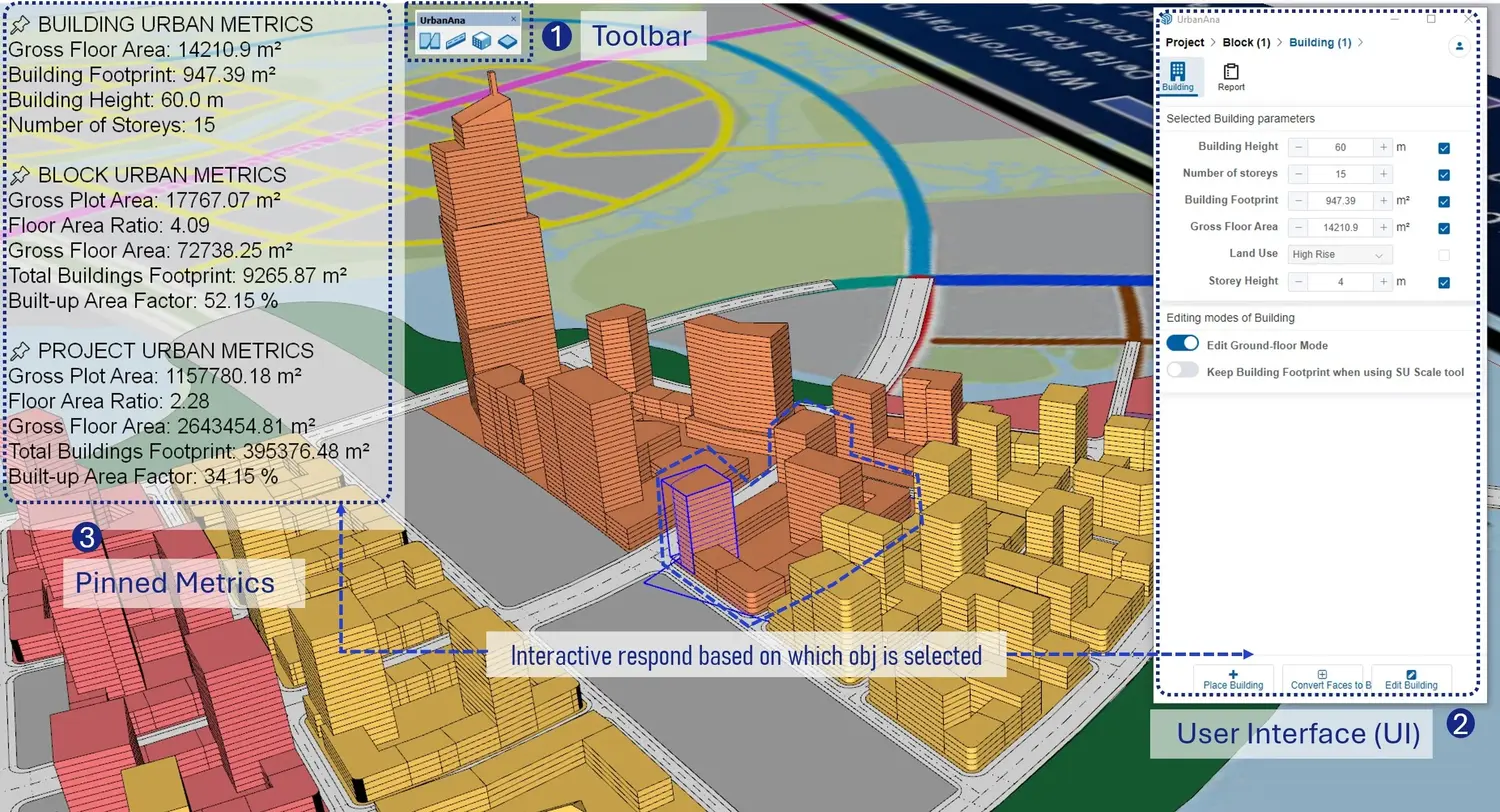UrbanAna at the Forefront: Conversations with Two of China’s Leading Design Institutes
4.1 min read

In March 2025, we had the privilege of introducing UrbanAna, our real-time urban design platform, to two of China’s most established design institutes:
- Xiangtan City Planning and Architectural Design Institute Co., Ltd.
- Shanghai Electric Institute of Machinery
These visits were more than product demos—they were conversations. Conversations about the future of planning, the evolving role of technology, and the challenges that seasoned professionals face when bridging traditional workflows with emerging tools.
Xiangtan City Planning and Architectural Design Institute

Founded in 1980, Xiangtan Design Institute is a powerhouse of urban planning, architecture, and municipal engineering in Hunan Province. With over 300 employees and a portfolio that includes high-rise towers, green buildings, and award-winning civic projects, they represent the deep legacy of design excellence in China’s second-tier cities.
When we presented UrbanAna, we weren’t sure how it would be received. Many of the planners and architects in the room have spent decades working in CAD-based systems and government workflows. But what followed was one of the most candid and inspiring discussions we’ve had so far.
One senior planner leaned forward and asked, “Can UrbanAna support regional planning at different scales—say, from a town block up to a full industrial district?”
Another asked about our zoning system adaptability:
“Chinese local zoning is not always standardized. Can your software handle custom parameters and color codes?”

Our team presenting UrbanAna at Xiangtan City Planning and Architectural Design Institute — where tradition meets innovation in urban planning.
These were not basic questions—they came from professionals who know the tension between ideal urban models and real-world constraints. Our response? UrbanAna currently supports projects ranging from around 50 hectares to 5,000 hectares, making it suitable for both neighborhood-level planning and broader zoning initiatives. While we don’t yet have a fully automated parser for local zoning codes, we’ve added it to our feature request list. In the meantime, users can manually configure overlays with flexible zoning parameters and color codes.
We were encouraged to hear their interest in using UrbanAna for scenario testing and public consultation visualizations. For a city like Xiangtan, which is balancing heritage preservation with rapid growth, tools that bring data and design into the same canvas could be transformative.
Shanghai Electric Institute of Machinery

At Shanghai Electric Institute of Machinery, we entered a very different design culture. Founded in 1953 and ranked 16th in national design institute contracts in 2021, this institute is deeply embedded in China’s industrial and infrastructure planning ecosystem.
Our hosts were systems thinkers—many with engineering backgrounds and deep knowledge of energy systems and industrial layout design.
Here, the conversation focused less on residential zoning and more on green planning.
“Can UrbanAna help us visualize environmental analyses? We’re particularly interested in sun shadow studies, sky view factor calculations, and wind flow patterns.”

A deep dive into green industrial design at Shanghai Electric Institute of Machinery, exploring how UrbanAna supports early-stage zoning planning and future environmental analysis.
While UrbanAna isn’t yet a full simulation suite, we explained that analysis features like sun shadow, sky view, wind and emissions analysis are already on our roadmap. Our real-time spatial tools currently support early-stage concept planning, helping teams visualize and test land-use configurations through an environmental lens.
However, we also acknowledged that deep integration with Revit is outside our current scopet. This led to a meaningful discussion on interoperability, with several engineers requesting IFC export features and CSV compatibility—both of which are on our roadmap.
Bridging Vision and Reality
Both visits surfaced a shared desire: tools that are fast, visual, and adaptable—without requiring a total overhaul of current systems. Many participants voiced the same dilemma: they want to embrace innovation, but only if it respects the years of standards and protocols they’ve built their careers on.
UrbanAna doesn’t claim to replace existing platforms—but to augment them, offering a middle ground between rigid CAD files and abstract urban models. It integrates directly as a SketchUp extension, fitting smoothly into current workflows without the need for another platform.
What We Learned
- Openness matters. Showing our limitations and listening carefully built more trust than a perfect pitch.
- Transition is as important as transformation. Many questions were about workflow compatibility, not just features.
- Localization is essential. We need to go deeper into local zoning logic and data formats to truly serve the Chinese planning ecosystem.
Next Steps
We’re following up with both institutes to provide deeper technical demos, discuss pilot projects, and explore co-development opportunities. UrbanAna is still evolving—but these conversations reminded us why we built it: to support people-centered planning in the age of real-time cities.
For more updates, visit urbanana.su or reach out to our team for a tailored walkthrough.
Table of Contents

